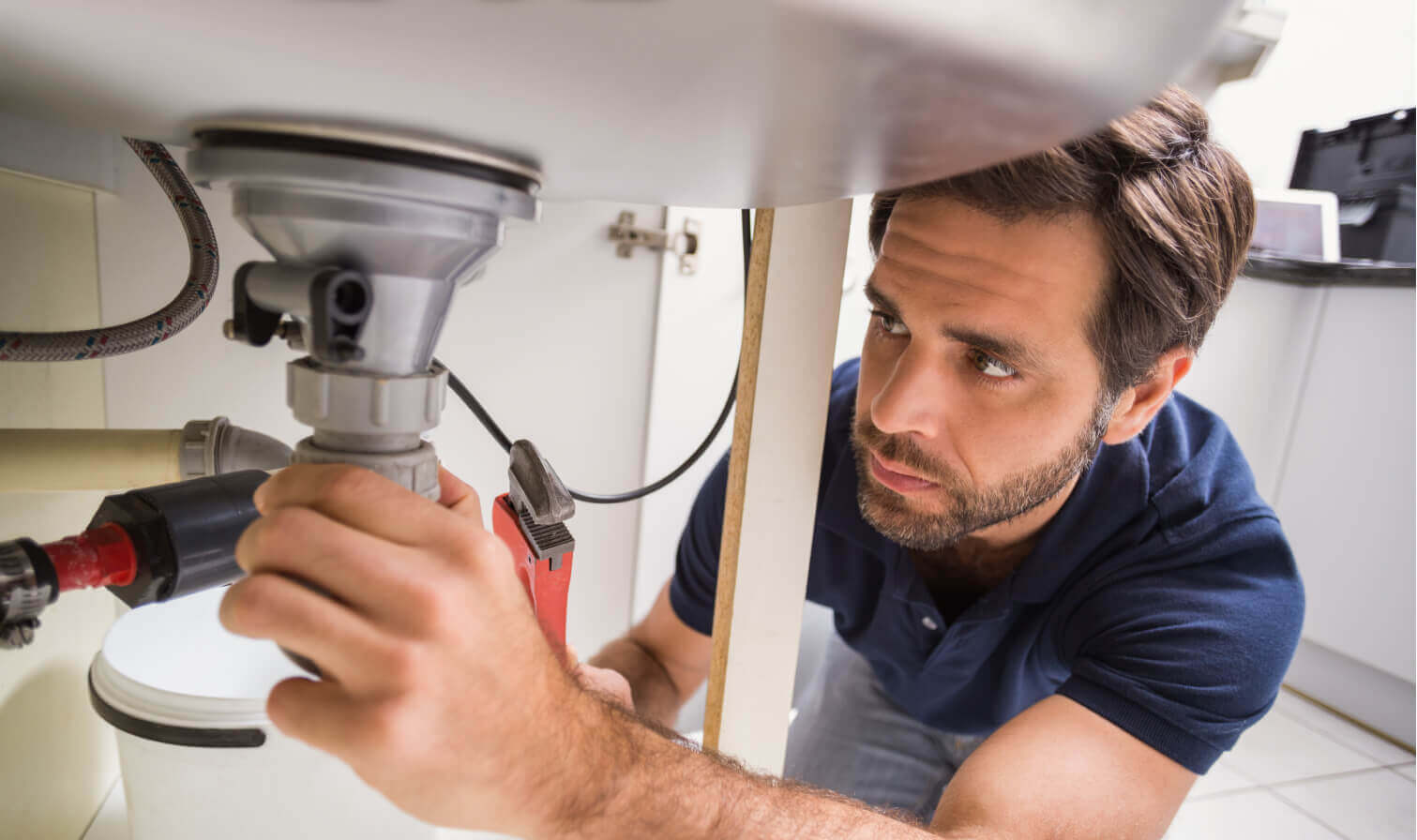Do you need a professional to Replace Sink Drain?
A sink drain, like any other plumbing fixture, is vulnerable to breakage. The process of replacing the drain in the sink is not the most difficult in the world but requires a special approach given the nuances, which means that you can’t do it without the services of professional plumbers.
Home sinks must cope with dirty water, harsh detergents, and the strain of scraping and scratching dishes. Bathroom drains are also exposed to all sorts of cleaning products, in addition to getting hair, debris, and sometimes glitter and other potentially dangerous clogs from cosmetics. Sink drain replacement services are an undesirable expense, but they may be necessary if you have plumbing problems that simply can’t be fixed.
Superior Plumbing & Heating, a company with 35+ licensed plumbers and round-the-clock customer service 365 days a year, offers services for plumbing work, including readiness to replace a sink drain.
Drain – a mandatory element, the installation of which is carried out when installing a sink, bathtub, or shower. It performs the following functions:
- Carries out the timely and prompt transfer of dirty water from the sink along the drain pipe inside the sewer.
- Filters out light debris.
- Prevents the penetration of unpleasant odours from the sewer.
Replacing this plumbing is not as difficult as mentioned above but dangerous. That is due to the hazardous substances with which plumbing is filled. Toxic gasses, sludge, and feces are all the things a plumber encounters when working with sewers. All this is dangerous also because it can cause damage to the intact skin. If you do not have the skills of a plumber and do not follow safety procedures, you need to call professionals. Our specialists distinguish three main causes of failure:
- the presence of a crack and other mechanical damage;
- wear and tear of gaskets and lack of tightness;
- low tightness of fixation of parts.
Replacing any drain is preceded by removing the old one and then installing the new one. Modern elements for sink or bathtub drains are simple structures, but their installation requires a responsible approach and accuracy because of the limited space for work. Also, an important step in replacing the drain is assembly, which requires a good understanding of plumbing.
Assembling a bathroom sink drain: what do you need to know?
When assembled, the bathroom sink drain is a continuous piece of pipe, but it consists of several separate parts:
- The strainer is the metal drain cover.
- The outlet is a vertical section of pipe that branches down from the drain.
- A U-shaped siphon is a curved pipe into which the shank drains.
A siphon is a horizontal pipe that connects the pipe to the drain. The plumbing code requires a siphon on all plumbing appliance drains. If you’re interested in how the bathroom sink drain assembly is done, then, without going into detail, it looks like this:
Our master connects the drain to the sink. The design is placed under it, and the dimensions are checked beforehand. Subsequently, unscrew the plug from the bottom of the unit and inspect for damage.
Before installing, a professional checks all threaded connections, nuts, joints, and gaskets. The rubber seal placed in the groove is covered with a small amount of sealant. Before assembly, an expert selects the length of the tub, the height of which is determined by the depth of the sink. Subsequently, the part is mounted to the sink, placing a gasket between the elements.
We always check the tightness of the assembled sink drain. To do this, we turn on the water by placing a cloth or paper towel under the system. Our company is client-oriented, so your comfort is important to us, and we are uncompromising about the quality of our work.
Frequent mistakes in installing a bathroom sink drain
While plumbing work is far from the most glamorous part of a remodel or renovation, it is necessary. However, knowing how to repair or install a bathroom sink drain is a task that an experienced plumber can easily handle.
Given the complexity of this project, don’t try to cut corners to save on installation costs. If you are an experienced do-it-yourselfer, this can be a simple installation. For most homeowners, it also makes sense to entrust the job to professionals. Some potential mistakes that can occur when installing a bathroom sink drain yourself include:
- Upgrading to a deeper sink without measuring the tail end, which can interfere with the drain;
- Not noticing water damage to the countertop, which can prevent the sink from sitting flat on the countertop;
- Shoddy parts.
A local plumber has enough experience and knowledge to know what parts you need at a given time. When you work with a professional, you don’t have to think and worry about whether you’ve chosen the right materials. At Superior Plumbing & Heating, our skilled plumbing professionals will be happy to help you learn about the basic bathroom sink drain installation mistakes to avoid.
Replacement of sink drain pipe in the wall
In addition to the above, a leaking sink drain pipe in the wall can also be a big problem. Excess water can lead to mould, damage to your sink cabinet, deterioration of materials, and an increase in your water bill. It is important to replace a faulty sink pipe as soon as possible to reduce the damage from a leak. Our company will provide fair prices, guaranteed and quick results. We are always looking for an acceptable solution when working on your case. And our flexibility and individual approach are known as we strive to meet your personal needs. Our specialists are fully trained, and they are ready to explain to you the repair process and even the structure of the sink drain pipe. So here’s a short guide from them.
The sink trap P connects to the drain in the wall with a short horizontal drain pipe. Usually, holes can form in these pipes, and they leak, especially if the pipe is made of copper or galvanized steel. And the pipes can rust and break inside the wall. When this happens, our plumber needs to open up the wall and cut out the leaking section of the pipe to insert a new one.
Typically, the easiest solution is to cut the metal pipe and connect the PVC to it using a rubber sleeve with stainless steel compression bands. These tapes are tightened securely with a flathead screwdriver.
But the situation does not always allow you to limit yourself to this. It may be necessary to replace the entire drain pipe from the sink to the main drain in the building. This can be done in at least two ways. First, the professional opens up the wall and removes the old pipe, and replaces the sink drain pipe in the wall. Or, the old drain pipe can be left in the wall, and the new drain can be run through the floor under the sink. If the drain is abandoned, all vent pipes and drain connections must be rerouted to another drain and sealed securely.
If you’re going to call a plumber, do it before you try to repair it yourself. Even a simple re-installation of a wall sink drain can turn into a disaster because you usually have to redo everything all over again to find out what the problem is. And sometimes, when the root of the trouble is found, it can turn out to be about something else entirely. Therefore, based on our many years of experience, we recommend you trust our licensed specialist and not cause unnecessary trouble.
Replace the sink drain in the bathroom: what do you need to do?
We understand that you probably haven’t spent much time thinking about replacing a bathroom sink drain. It’s just one thing hidden away and serves its purpose without attracting much attention. But all troubles catch us unawares, and this one is no exception.
But what are the possible causes for replacement?
A leaking sink drain causes bathroom floor damage. What’s more, a leaking sink drain – unnoticed for weeks or months – can ruin a tub, cause mould and mildew problems, and even leak into the wall behind the sink.
However, these aren’t the only reasons to replace your bathroom sink drain. If you decide to replace your sink, be sure to replace the plumbing drain because old plumbing fixtures don’t always come back together without creating new leaks. Old sink drains are another problem that will eventually cause damage to your bathroom walls, floor, and cabinets.
If you have a metal sink drain that looks rusted or corroded or a plastic drain with a lot of dirt around the fixtures, it’s a sure sign that the drain needs to be replaced. These are signs of seepage, and even if it’s not enough to cause damage, the situation will likely worsen over time.
But if you’re having problems with your bathroom drain, there’s no need to panic, and it’s best to call in a professional. Superior Plumbing & Heating is always ready to help you. That is why we protect you and your family from returning problems. If you have a question about how our plumbers repair a sink drain, it’s simple:
Our master installs a rubber gasket in the sink and the drain cup on it, puts another gasket on the bottom of the sink spigot, and lightly tightens the nut. After that, a siphon is put on the cup, sealed with a gasket ring and lightly fixed union nut. Then install the overflow and drainage system and check its installation in the siphon. All components of the drainage pipe must be positioned in their places in the correct dimensions. Lastly, the siphon is connected to the central sewer.
The proper installation of a bathtub drain can reduce to a minimum the possibility of overflowing the water in the bathroom. It is necessary to keep order because water can fill the tub faster than drains. At the same time, there is not only the possibility of flooding the floor but also of flooding the neighbours.
We guarantee: that once our plumber copes with the problem – it will be once and for all. Even if you have an emergency, our plumbers will come and do their work in the shortest possible time. We appreciate your trust and try to meet our client’s expectations.

 Call us and we’ll come to you
Call us and we’ll come to you 










